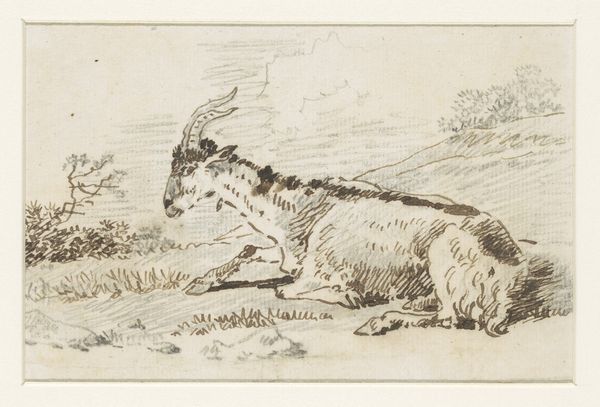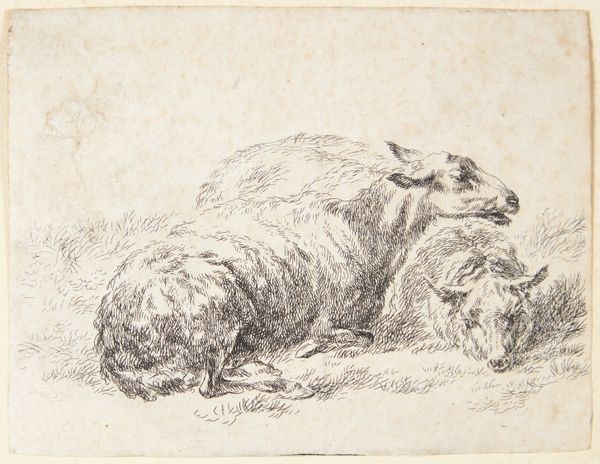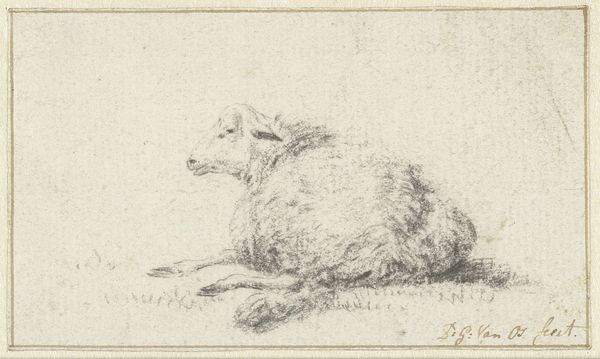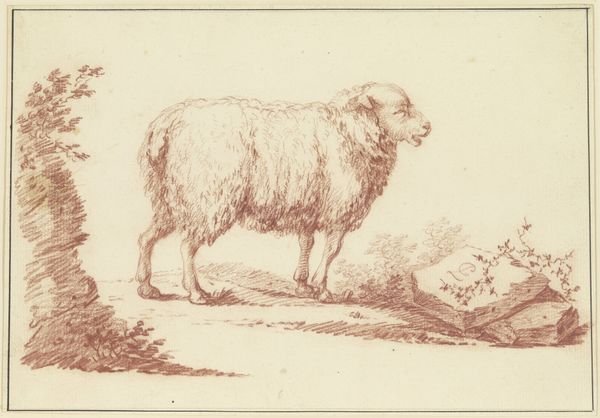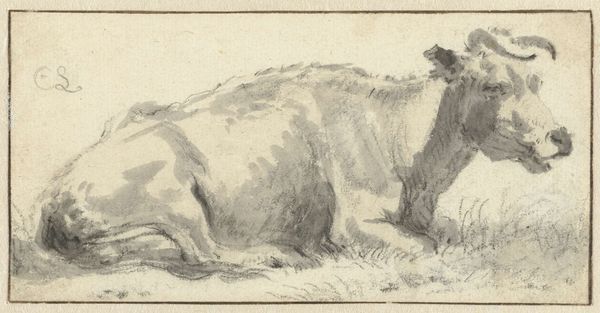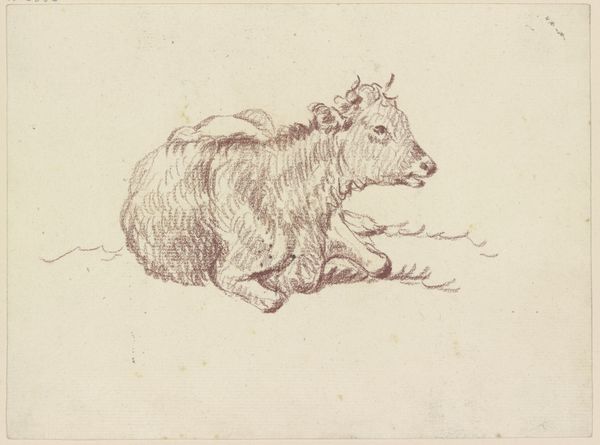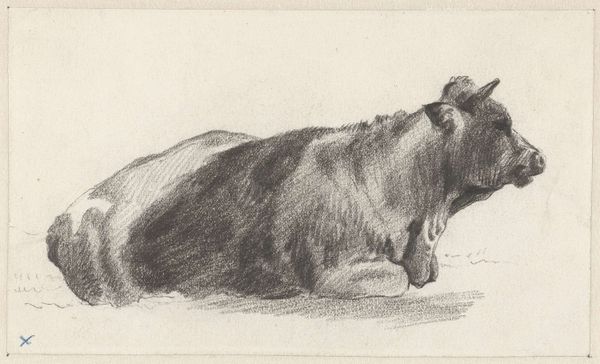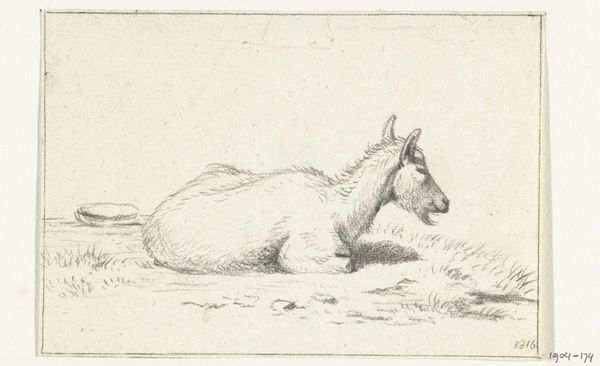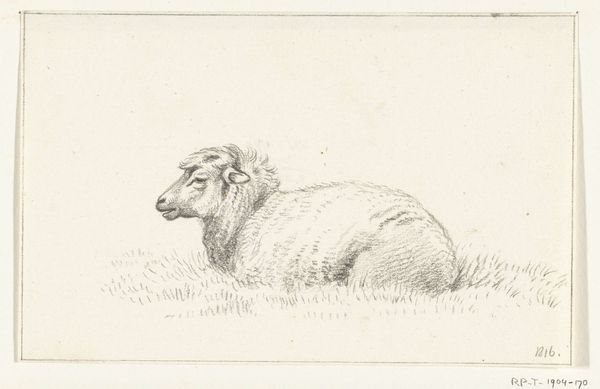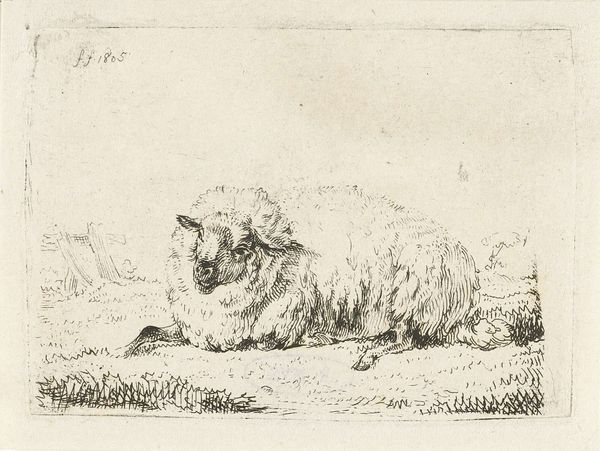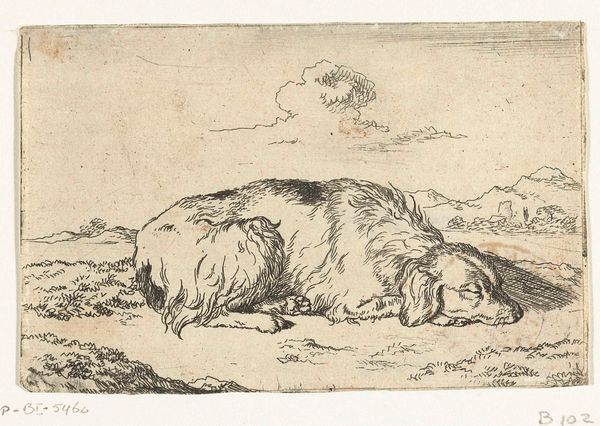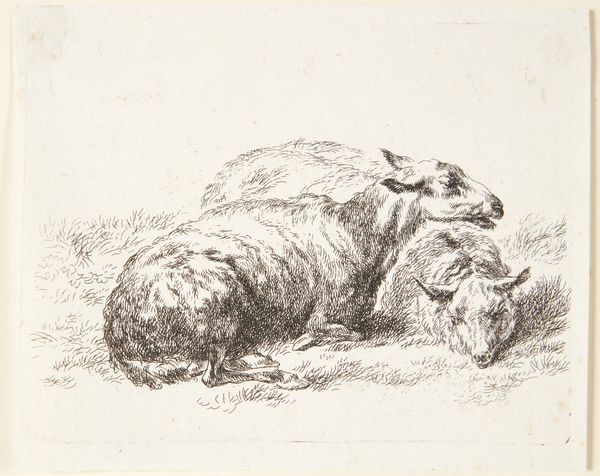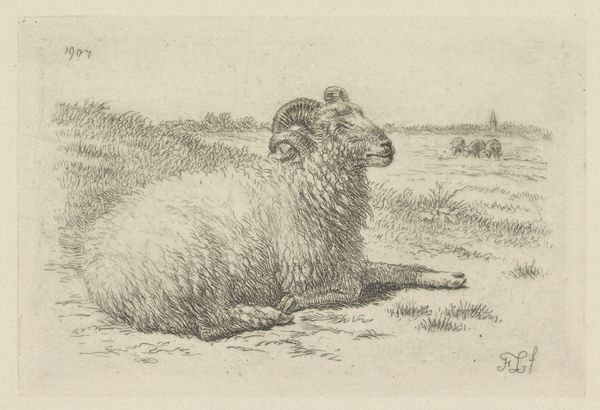
drawing, watercolor, pencil
#
drawing
#
dutch-golden-age
#
pencil sketch
#
watercolor
#
pencil
#
watercolor
Dimensions: height 168 mm, width 236 mm
Copyright: Rijks Museum: Open Domain
Curator: This delightful drawing, “Liggend kalf, naar links,” or “Lying Calf, facing left,” was created by Cornelis Saftleven in 1653. It employs pencil and watercolor, showcasing a tender depiction of a calf at rest. Editor: It’s a deceptively simple composition, isn’t it? The muted browns and grays create a sense of tranquility. It looks incredibly soft, almost as if you could reach out and touch the calf's fur. Curator: Indeed. Saftleven’s choice of medium speaks volumes. Pencil, easily sourced, suggests a focus on accessibility of materials, reflecting a broader shift in art production during the Dutch Golden Age where artmaking served the tastes and economics of the rising merchant class, resulting in a kind of “art for all”. Watercolor lends itself to quick studies, but also creates soft textures with loose application. Here it allows him to capture the natural world faithfully and economically, a direct response to its potential for sale in an open market. Editor: I’m drawn to how the composition emphasizes the roundness of the calf, it fills the space, creating a central mass while leading us towards an examination of each minute element of light and shade that make up the form. There's an undeniable softness and sensitivity to line in the grass and the animal's coat—despite being relatively small, there is the use of texture to lead us around the picture plane. Curator: Absolutely, the materiality enhances our understanding of Saftleven’s process. Pencil sketch underlayers combined with layered watercolor washes demonstrates how technique can be adapted towards achieving visual and commercial outcomes that are mutually dependent on the availability of labor, distribution channels, and consumer tastes. He presents this domestic animal, rendered beautifully yet straightforwardly to connect viewers with daily rustic life in 17th-century Holland, while also subtly feeding Dutch pride surrounding agriculture through careful choices such as light. Editor: Yes, and formally, observe how light catches its coat. It evokes a quiet intimacy, pulling the viewer closer. He emphasizes soft forms in the animals fur and harness with controlled values and gentle shading. It shows how mastery in line, volume and form can transcend simple representation and invoke a gentle stillness. Curator: Seeing art as both an economic and aesthetic endeavor shifts focus from artistic genius and uniqueness towards studying cultural impact within historical realities, encouraging a reassessment from merely admiration towards informed interpretations where labor and resource realities can shape artworks' reception and status over generations. Editor: The quiet grace of this drawing serves as reminder that art is not divorced from, but embedded in lived experience – even now. Through careful observations we are allowed to reexamine our assumptions.
Comments
No comments
Be the first to comment and join the conversation on the ultimate creative platform.
